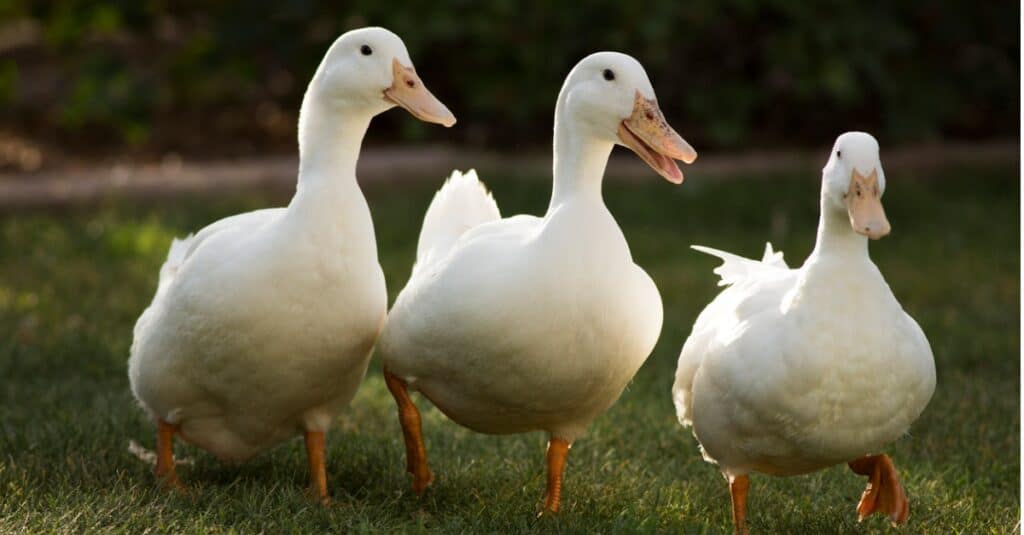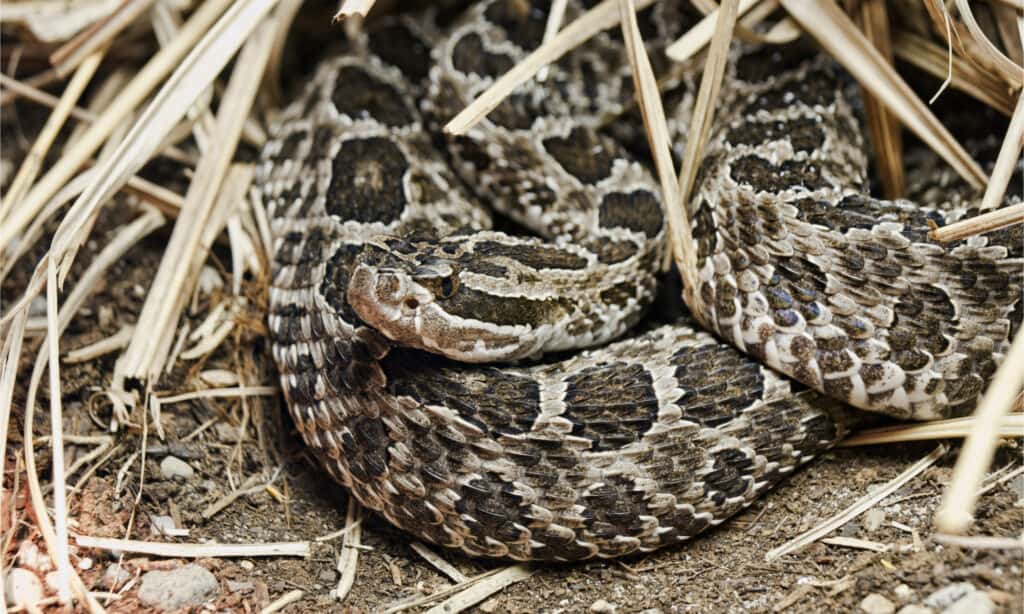Indiana may be known for the Indianapolis 500, the University of Notre Dame and it’s love of college basketball (go Hoosiers!). It is also mostly farmland, forests and woodlands with two thirds of the state being farmland. There are 56,500+ farms throughout Indiana that produce a variety of plant and animal products. Indiana’s most profitable crop is corn, with $3.28 billion in sales and soybeans bringing in $3.08 billion in sales. They are also the number one producer of commercial ducks! Turkeys, hogs and dairy cow farms are also common in the farming industry of Indiana. But are any of these animals dangerous? Are there any headlines of “Ducks Gone Wild, Attack Farmer Brown”?
There really aren’t that many dangerous animals in Indiana, but farming accidents involving animals is a big concern, especially with larger animals like horses and cattle. Off the farm there are a few animals to be aware of in Indiana as well. Learning how to identify the states venomous snakes may help prevent any dangerous encounters. Let’s take a look at some of the deadliest animals in Indiana (probably not ducklings though).
Are Ducks the most Dangerous Animal in Indiana?

Indiana is one of the largest producers of ducks in the US
©iStock.com/Maria Jeffs
The U.S. Department of Agriculture reports that there are around 27.5 million ducks harvested each year in the U.S. Two farming groups manage 75% of the duck farming and most of their farms are located in Indiana. The ducks that are bred for the commercial duck industry are the American Pekin ducks. Pekin’s are all white with a yellow bill and orange webbed feet. They can grow to be 8 to 9lbs and are hardy animals that can handle cooler temps in Indiana. Baby ducklings are fuzzy and yellow but outgrow their yellow fuzz around 4 to 5 weeks of age.
When you hear “Pekin” duck you may think of a delicious dish at LeeAnn Chins, but “Peking” ducks are different and are from China. However the American Pekin does have it’s origin from Southeast Asia, being exported to England in 1872 and then arriving in America a few years later. These ducks are found both in the wild and on farms. The farming industry uses them for eggs and meat.
Although attacks by ducks are extremely rare (you can find videos of random duck attacks on the web) the biggest threat of farming ducks is the exposure to infectious disease. Unlike rabies where it is transmitted by a bite or scratch, this bacteria can be found in the droppings and when it dries it is mixed with the dust in the pen and can be breathed in causing Psittacosis. Keeping the plant and the housing areas clean and wearing personal protective equipment can help minimize the risk of the disease. So for the most part, ducks are not one of the deadliest animals in Indiana.
What about Pigs, Cows and Turkeys?
- Pigs: A farm hog can grow to be 3 to 6 ft long and weigh an incredible 770lbs! You have to respect an animal that big. They are not overly aggressive animals but they can charge at you and with their sheer weight knock someone over. The mother hogs may try to protect their young so be extra cautious if you need to interact with a mother hog. They can bite and have powerful jaws, but this is quite rare.
- Cattle: Indiana has 187,000 dairy cows and use the milk for a variety of dairy products. Cows can get to be 5.5 feet tall and weigh between 1,400 and 2,000lbs. Your average grizzly bear weighs 400-800lbs, and are clearly dangerous, but cows don’t have sharp teeth or claws so how can they be dangerous? According to the CDC there are around 22 fatalities related to cow incidences per year. Dairy cows can easily be startled and can turn and trample an unsuspecting person. Bulls can be very aggressive, so extra caution needs to be followed at all times around bulls.
- Turkeys: Farm-raised turkeys average 31.9lbs which is much more than twenty years ago. In Indiana there are 20.5 million turkeys! Turkey farmers need to be aware of the dangers of infectious disease similar to the risks of duck farming. Out in the wild people should not approach turkeys as they can become aggressive if they feel threatened. A recent news report reminds people to not venture out onto roads or highways to try to get a turkey to leave the road as it is very unsafe. According to WSBT News out of South Bend, Indiana a lone turkey keeps showing up at an intersection of LaPorte Co. Some motorists reported that the turkey tried to attack their cars with a conservation officer suggesting that it may be a male turkey that sees its reflection in the car door thinking it is another male turkey. He reminds drivers to stay in their cars.
What about Mountain Lions, Wolves, Coyotes and Bobcats?

Mountain lions are large cats, and although not usually aggressive, have been involved in attacks on humans as well as causing death.
©iStock.com/SandmanXX
There are mountain lions, wolves, coyotes, and bobcats in Indiana but encountering one is quite rare. What is the difference between them? Mountain lions and bobcats more resemble cats whereas wolves and coyotes resemble dogs. Mountain lions are the largest, growing to be 8ft long (nose to tail tip) and weighing up to 150 lbs. Bobcats are the smallest weighing only 12 to 40lbs and can be 1.5 to 3.5 feet long. They typically avoid humans but it you do encounter one stay as far away as possible. Also be sure to keep your pets on a leash if you are in areas where these animals live as they can attack and kill pets.
What Snakes are Dangerous in Indiana?

Eastern massasuagas are one of four venomous snakes in Indiana
©DnDavis/Shutterstock.com
Some of the deadliest animals in Indiana are snakes and there ae four kinds of venomous snakes in the state:
- Eastern copperhead: In the southern half of the state you might find these snakes. They get their name from the copper-colored head. If you are hiking in the fall in snake territory you may spot a group of these snakes that sometimes travel together when they are headed for their hibernation sites.
- Northern cottonmouth: Northern cottonmouths get their name from the white interior of their mouths. They are semiaquatic snakes and like to spend time in the water and swamps.
- Eastern Massasauga rattlesnake: These snakes also prefer wetlands and can be found in the northern third of Indiana. They are federally threatened and also protected in Indiana.
- Timber rattlesnake: The Indiana DNR has the timber rattlesnake listed as endangered so it is highly unlikely you would come across one. However, recently a large timber rattler was found in a man’s garage in Jackson County. Authorities were able to remove it and also found two more in the area. Not something I would want to see when I am taking out the trash!
Up Next
- Discover The 2 Types Of Rattlesnakes In Indiana
- Discover The 9 Largest Animals In Indiana, And Where You’ll Find Them
- The Top 10 Deadliest Animals In The World
The photo featured at the top of this post is © Joe McDonald/Shutterstock.com
Thank you for reading! Have some feedback for us? Contact the AZ Animals editorial team.






